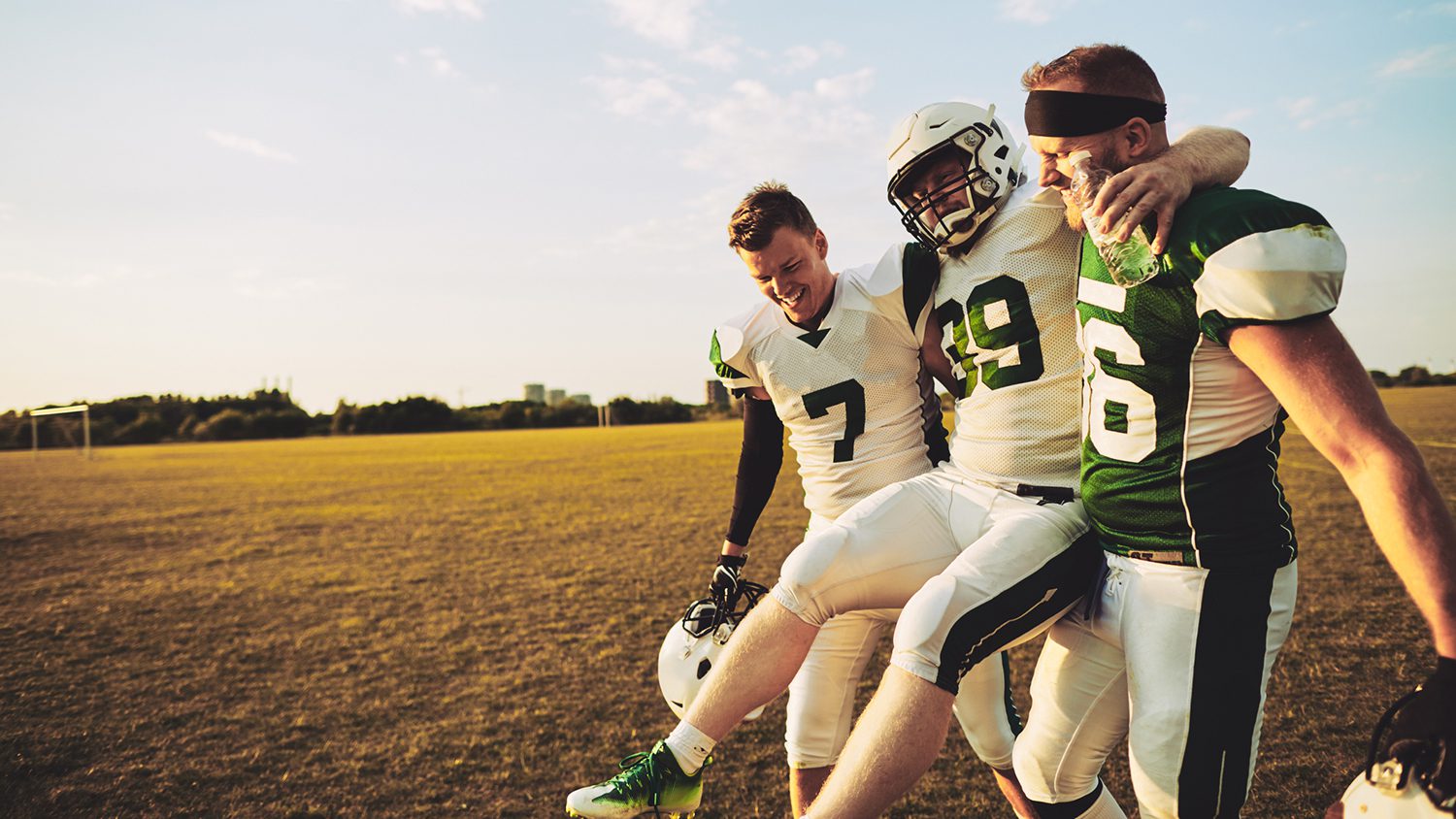Students study how to prevent injuries in high school athletes

To read about more student research, click here.
The first step to preventing injuries in a given population, say among high school athletes, is to understand the injuries.
A team of researchers at Furman University is starting to do just that, laying groundwork for injury prevention in high school football and volleyball players and cross-country runners at several schools in the Upstate of South Carolina.
The research will help trainers evaluate the risk of injury by position for volleyball and football players, and by how many miles cross-country runners rack up, says Chris Hopkins, assistant professor of health sciences at Furman.
“The big picture is to create a surveillance program to measure how injuries change over time,” Hopkins says. “Through injury surveillance we monitor what the problem is. If we find a higher risk in a certain population, we analyze the problem. The next step is to determine what’s causing the risk and then develop preventions, then revisit.” He says the study will hopefully expand to other sports and take place year-round.
Hopkins and three Furman undergraduate students working as summer research fellows – Stephanie Behrens ’22, Jocelyn Toner ’22 and Beth Donnelly ’24 – are working with PlaySafe, a non-profit organization in Anderson, South Carolina, that provides athletic trainers for schools that can’t afford to have them on staff. The students are spending the summer creating questionnaires to better understand the athletes’ physical condition and will send weekly questionnaires to the athletes throughout the fall, when each sport has its season.
PlaySafe, with 23 full-time trainers at 31 schools in Georgia and South Carolina, gives the Furman researchers access to the athletes. For the initial project, Furman will be working with trainers at schools in Pickens, Anderson and Oconee counties.
The primary goal is prevention. Donnelly, a Furman cross country team member from Nashville, remembers what it’s like to be a high school athlete with an invincible attitude. “I just had this mentality that I’m not someone who gets injured,” she says. She wound up overtraining and suffering a stress fracture. That’s the kind of injury she hopes to help prevent among the high school students in the study.
Jim Stoker, ’89 M ’99, interim executive director of PlaySafe, says South Carolina doesn’t have a surveillance system in place. He hopes the research will help explain the need for having athletic trainers at sporting events, not only to care for injuries on the sidelines but to keep young athletes out of emergency rooms.
Behrens worked with Donnelly in the spring to identify the research objectives, and all three students have worked to create survey questions that check on an athlete’s health. They’ve also created disclosure forms and made sure all regulatory details were worked out, and they’ve been busy reviewing the literature on high school sports injuries.
Toner has been interested in working with the community on preventing athletic injuries since she was in high school in Roswell, Georgia, where she was on the track team. Like Donnelly, she bought into the “no pain, no gain” adage until she did her own research. “Sports and being active is very important, but it’s also important to make sure that you’re doing it safely to avoid long-term injuries,” she says.
A secondary research objective is to study balance related to concussions in football players. In August, Hopkins, Behrens and Toner will take baseline measurements of athletes’ balance and retest those who suffer concussions during the season to note any lingering effects.
Behrens, from Wyckoff, New Jersey, says the opportunity to do research as an undergrad will help her chances of getting into medical school. Toner, from Roswell, Georgia, plans to go to graduate school in kinesiology. She says the experience will help her decide if research is something she wants to pursue.
The research is funded by Furman’s Institute for the Advancement of Community Health and the Robert H. Brooks Sports Science Institute at Clemson University. Summer research fellows receive stipends that cover room and board.